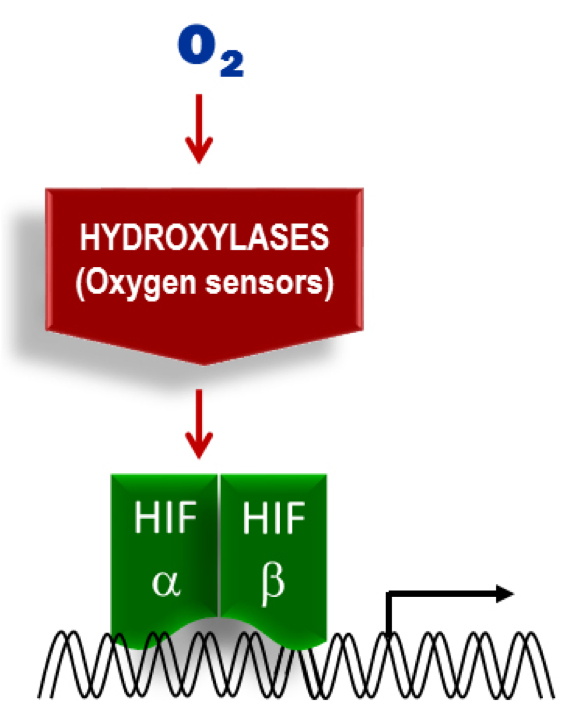Role of HIFs in cancer

Decipher the specific roles of HIF1 and HIF2 in multiple myeloma.
The Hypoxic Inducible Factors (HIFs) are master regulators of the genomic response to hypoxia. They function as heterodimers comprised of an oxygen regulated alpha subunit (either HIF-1a or HIF-2a) and the constitutive partner, ARNT, also known as HIF-1b, to form HIF-1 and HIF-2, respectively. The HIFs are essential for normal development and physiology, but also play important roles in the pathophysiology of most major human diseases, including cancer, vascular disease, heart attack and stroke.
Both HIF-1 and HIF-2 have been implicated in numerous aspects of cancer progression, including angiogenesis, metabolic reprogramming, invasion and metastasis. More recently it has been shown that HIF-1 and HIF-2 can have distinct roles in tumour progression that are either complementary or counteractive, depending on the cancer context.
We are very interested in deciphering the specific roles of HIF-1 and HIF-2 in two types of cancer, multiple myeloma and ovarian cancer.
This information is crucial for understanding disease progression, for prognosis, and ultimately for novel therapeutic approaches. To this end we have been using CRISPR-Cas9 technology to knock out each of the HIFa subunits in cancer cell lines to characterise their non-redundant functions in disease models.
Multiple myeloma is a cancer of the plasma cells in the blood, with severe consequences. The HIFs have been implicated in disease progression, although their specific roles remain undefined.
We have both human and mouse multiple myeloma cell lines that we can culture, genetically manipulate in vitro, and then in collaboration with Professor Andrew Zannettino at SAHMRI, analyse them in a mouse model to follow each of the major steps in disease progression.
This project will involve the analysis of CRISPR-Cas9 mediated of HIF knockout cell lines using in vitro and in vivo models of cancer progression. It will involve a range of molecular and biochemical techniques, including molecular biology, mammalian cell culture, gene expression analysis and cancer model systems.
References
- bHLH-PAS proteins in cancer. Bersten DC, Sullivan AE, Peet DJ, Whitelaw ML. Nat Rev Cancer. 2013 13:827-41.
- HIF-2 is a novel regulator of aberrant CXCL12 expression in multiple myeloma plasma cells. Martin SK, Diamond P, Williams SA, To LB, Peet DJ, Fujii N, Gronthos S, Harris AL, Zannettino AC. Haematologica. 2010 95:776-84.
Study biochemistry
Dr Peet is an Associate Professor in Biochemistry at the University of Adelaide. His research interests are centred on understanding the molecular events within cells that underpin the genomic response to hypoxia.
The cellular response to hypoxia is essential for many physiological processes in normal development and adult physiology, and contributes to the pathophysiology of major human diseases, including cancer, myocardial and cerebral ischaemia, pulmonary hypertension, and wound healing. The key components of this cellular response to hypoxia are a unique family of hydroxylase enzymes that act as the primary oxygen sensors, the Hypoxic Inducible transcription Factors (HIFs) that directly regulate gene expression, and specific target genes that mediate cellular changes.
His research interests extend beyond the HIFs, to the identification and characterisation of novel substrates of the oxygen-sensing hydroxylases. Understanding these processes has major implications for the diagnosis, prognosis and novel therapeutic approaches to treat human disease.

Supervisor
Research area: Biochemistry and molecular biology
Recommended honours enrolment: Honours in Molecular and Biomedical Science
